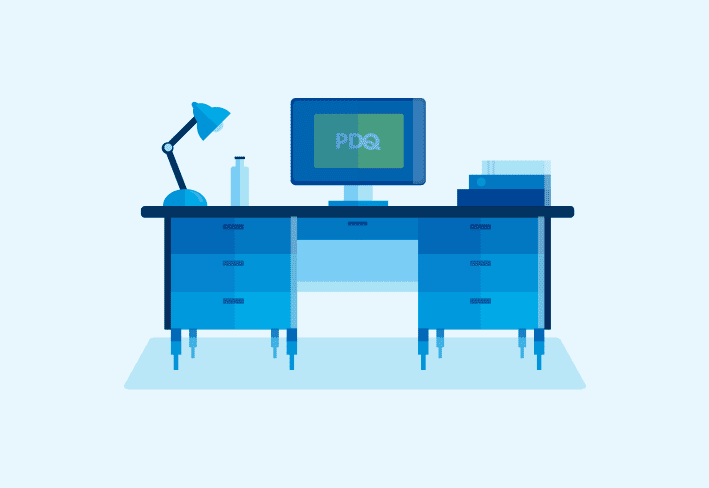No sysadmin wants to be stuck in the IT Stone Age. Old technology, outdated software, and the so-called “legacy system” pale in comparison to the latest technology. But beyond the obvious appeal of more modern systems, outdated technology can have far-reaching impacts on virtually every facet of your organization. We’ll explore the true costs of outdated IT and help you make a strong case for upgrading to new technology.
Outdated IT in government agencies
In many circles, bureaucracy is a dirty word. And that reputation isn’t entirely off base when it comes to technology — the government is spending a profane amount of money maintaining offensively outdated IT.
According to a recent article by the U.S. Government Accountability Office, 80% of the government’s $100 billion in annual IT spending goes to maintaining equipment. In contrast, the average IT department spends about 55% of its budget on maintaining operations.
In 2019 alone, just 10 federal information technology legacy systems cost about $337 million to maintain and operate. These systems ranged from 8 to 51 years old, and some had known vulnerabilities, unsupported hardware, or unsupported software.
You may have already experienced the consequences of a government agency’s outdated IT without even realizing it.
System problems
The COVID-19 pandemic put a spotlight on the shortfalls of government technology. While Americans scrambled to get information and aid in the wake of the crisis, state unemployment agency websites crashed, leaving some folks scrambling to get paper applications for unemployment benefits.
But the problems didn’t stop there. In early 2023, a computer glitch at the Federal Aviation Administration (FAA) led to 1,300 flight cancellations and 10,000 delays. The FAA chalked it up to human error following the procedures for a 30-year-old system. Maybe those workers messed up big time. We weren’t there. But in our experience, modern equipment with more built-in security measures reduces the likelihood of this sort of blunder.
Additionally, the IRS uses older systems, including the 60-year-old Individual Master File (IMF) system, which processes taxpayer data. IMF is scheduled for retirement in 2030, meaning taxpayers will have to wait a while for the rollout of a modern system with real-time data access.
The United Network for Organ Sharing (UNOS), a nonprofit agency overseen by the Health Resources and Services Administration (HRSA), has also experienced major technological hurdles. The Washington Post reports UNOS’s system needs an overhaul due to system failures, aged software, programming mistakes, and reliance on manual data input. Since this agency operates the nation’s transplant system, delays and failures caused by outdated technology could cost lives.
Mobile device OS issues
Security issues aren’t limited to PCs. Many government employees use Android or iOS devices running outdated operating systems, leaving known vulnerabilities unpatched. State and local government devices are particularly likely to lag behind on updates.
Government IT modernization initiatives
To address problems associated with outdated tech, the Modernizing Government Technology Act of 2017 authorized the Technology Modernization Fund (TMF). This investment program aims to transform the use of technology in government agencies. The Legacy IT Reduction Act of 2023 further affirms the government’s commitment to phasing out legacy systems.
Outdated government IT is not exclusive to the United States. Nations around the world struggle with keeping their technology up to date. In the U.K., healthcare, food security, and air quality systems are at risk. Meanwhile, Japan recently launched a national Digital Agency with the goal of doing away with fax machines and floppy disks. No, really.
Risks of outdated IT
Some things get better with age: whiskey, sharp cheddar, and that rare vintage 2020 roll of toilet paper you’re saving to donate to the museum. Unfortunately, IT infrastructure is not one of those things. Its performance gets significantly worse with age, creating unnecessary risks. And lots of ’em.
Increased expenses
Aging systems need more maintenance, which costs a pretty penny. On paper, replacing outdated equipment often appears expensive to leadership due to the higher upfront costs. But ultimately, you’ll probably save money by replacing devices in a reasonable timeframe rather than sacrificing countless hours of labor trying to drag an outdated system into the modern era.
Greater vulnerability
Since unsupported systems no longer receive security patches, they’re more susceptible to cyberattacks. And with the average data breach in the U.S. costing an estimated $9.44 million, do you really want to risk it?
Decreased productivity
Newer systems often incorporate automated and streamlined features to reduce time spent on repetitive tasks, supporting greater productivity. Don’t care about productivity? Upgrade your systems anyway and encourage users to spend their newfound free time perfecting their chocolate chip cookie recipes. You'll thank me later.
Diminished customer and employee experience
Unfortunately, you can’t just hide your problematic older technology in the back of the supply closet. Folks are going to find out one way or another. And all too often, that takes the form of a diminished customer and employee experience. Over time, this can jeopardize your client and employee retention.
Compatibility problems
That shiny new application might not work with older hardware or a machine running an outdated operating system (we’re looking at you, Windows XP). It’s like a snowball effect. If one component of your environment is outdated, it can force you to rely on other out-of-date technology.
Staffing issues
The more outdated your systems, the harder it is to find employees that know how to maintain them. You may need to train staff in house or fork over big bucks to get top talent with rare skills.
Case in point: While the average JavaScript developer earns around $117,000 annually, the average COBOL programmer makes over $123,000.
Noncompliance
Many businesses face legal or regulatory compliance requirements detailing critical cybersecurity measures. Outdated systems make compliance difficult — if not impossible. And if you fail to comply with relevant guidelines, you can rack up some hefty fines. Personally, we’d rather set aside that extra money for our Sysadmin Day video budget, but maybe that’s just us.
How to convince your boss to upgrade outdated systems
Up-to-date IT is worth the investment. We know it. You know it. But your boss might not know it. With the right approach, it shouldn’t be too hard to convince them to finally retire old office equipment.
Outline the risks
It’s not that nontechnical leaders want to torment you with outdated IT. More often, they’re just oblivious to the potential consequences. Laying out the risks is remarkably persuasive.
Leverage data
Any excuse to whip out a report is an irresistible opportunity to impress your boss. Performance metrics, vulnerability data, maintenance and support costs, and user feedback can help illustrate your point.
Involve coworkers
An outdated IT infrastructure affects everyone in the company, so don’t hesitate to loop in coworkers. Understanding how your existing tech impacts different teams can show your boss the error of their ways — or at least help them understand that you can’t expect exceptional team performance with second-rate equipment.
Make a proposal
If your workplace is formal (i.e., you don’t use Slack emojis of your CEO), a formal proposal and subsequent meeting may be your best course of action. Establishing your argument in an organized manner that your boss can refer to makes your message harder to ignore. And if they do ignore it and things go haywire, you have a paper trail to show higher-ups that you did your due diligence.
We’re not saying you should upgrade all your devices to NextComputing The Edge DLs. Frankly, Alex in accounting just shouldn’t yield that much power. But maintaining current systems can save you time and money while preventing unnecessary security risks. Plus, you get to try out the latest tech, which is always a nice bonus.
To make your digital transformation even more seamless, let PDQ Connect or PDQ Deploy & Inventory streamline your patch and inventory management processes. Enjoy a free trial of PDQ Connect to oversee those hard-to-reach remote machines, and take PDQ Deploy & Inventory for a spin to maintain devices on your network.




